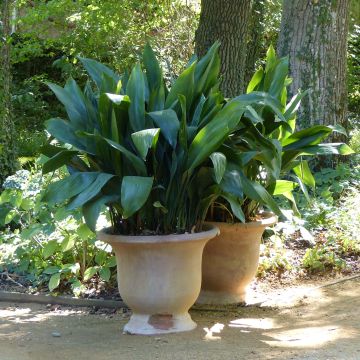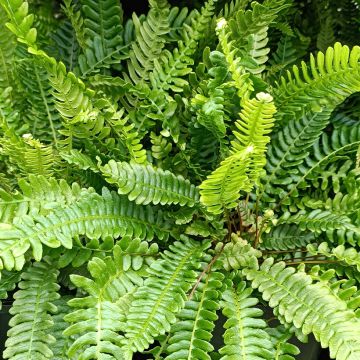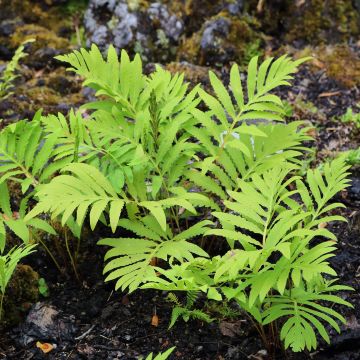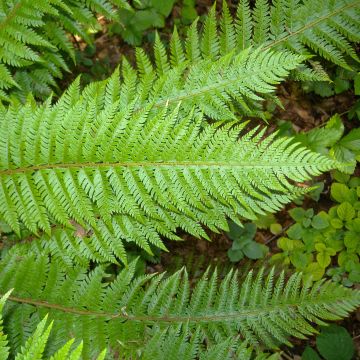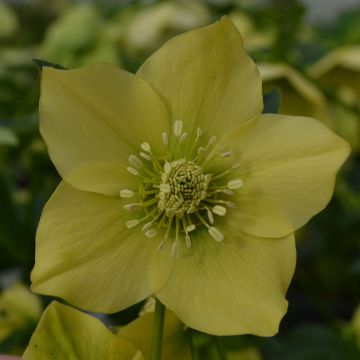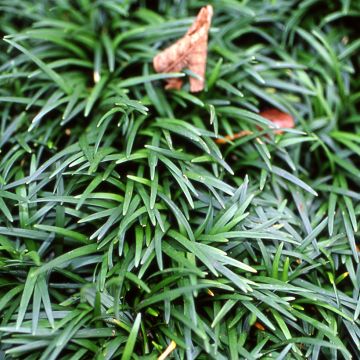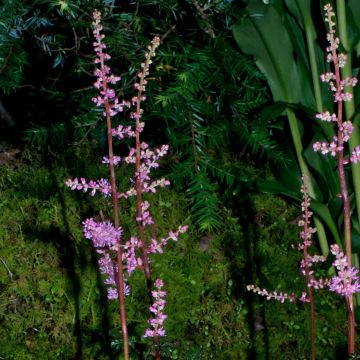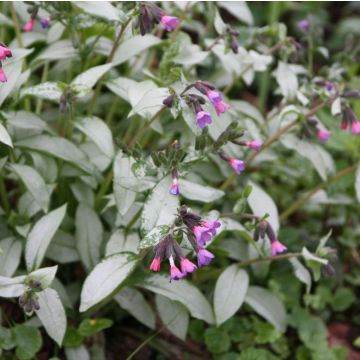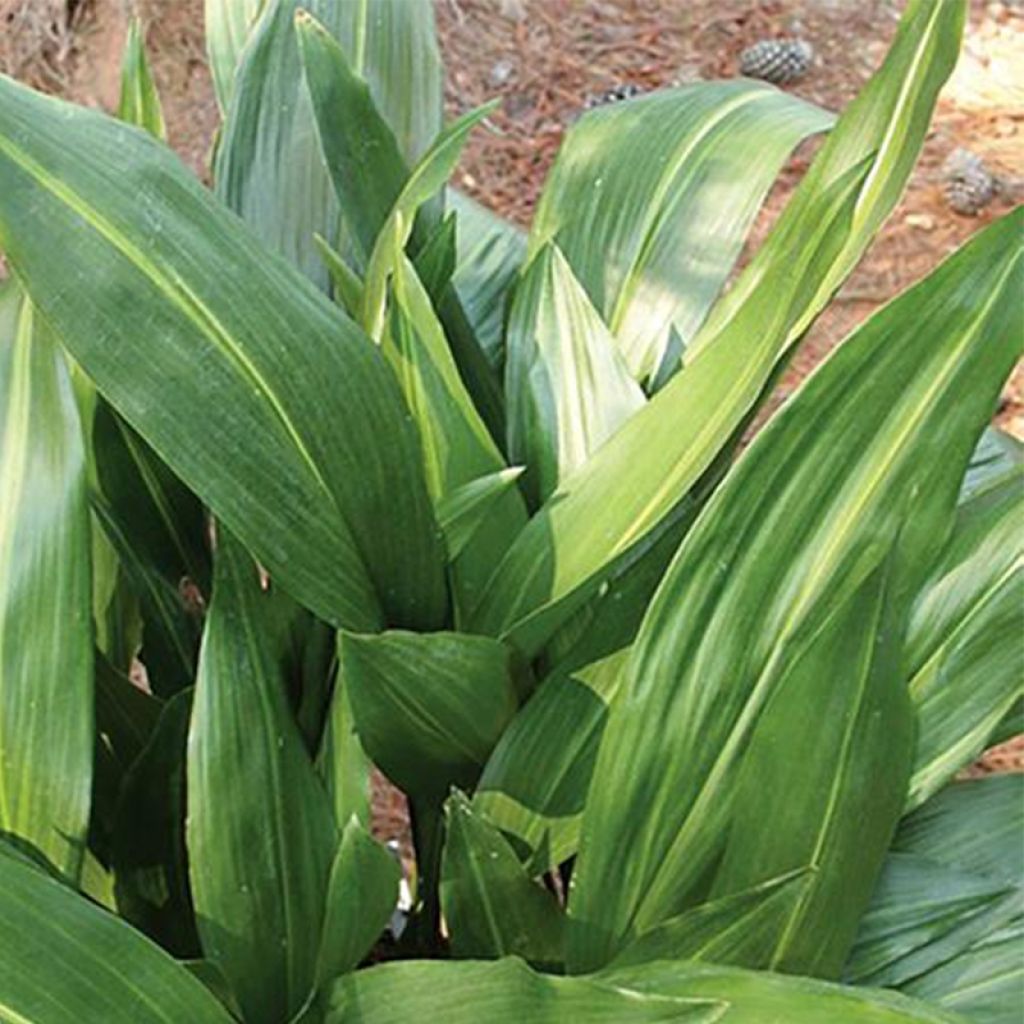

Aspidistra elatior Zebra - Aspidistre élevée
Aspidistra elatior Zebra - Cast-Iron Plant
Aspidistra elatior Zebra
Cast-Iron Plant, Bar Room Plant
Received a young plant very quickly and in good condition. Only needs to be planted, I will wait for a suitable day to do so, it is still cold. It is waiting in my garage with the few ray florets of sunshine, without the extreme cold. Many thanks to Jenny, the packaging was great, and to all of you.
Gisele, 10/03/2022
Special offer!
Receive a €20 voucher for any order over €90 (excluding delivery costs, credit notes, and plastic-free options)!
1- Add your favorite plants to your cart.
2- Once you have reached €90, confirm your order (you can even choose the delivery date!).
3- As soon as your order is shipped, you will receive an email containing your voucher code, valid for 3 months (90 days).
Your voucher is unique and can only be used once, for any order with a minimum value of €20, excluding delivery costs.
Can be combined with other current offers, non-divisible and non-refundable.
Why not try an alternative variety in stock?
View all →This plant carries a 12 months recovery warranty
More information
We guarantee the quality of our plants for a full growing cycle, and will replace at our expense any plant that fails to recover under normal climatic and planting conditions.
Does this plant fit my garden?
Set up your Plantfit profile →
Description
Aspidistra eliator 'Zebra' elegantly reinvents this green plant from the somewhat conventional interiors of the 1950s, where it vied for attention with Sanseveria, the other staple of former generations. This tall Aspidistra, with its silky and shiny leaves streaked with cream-white, makes for a very bright evergreen ground cover in partially shaded areas of the garden, especially under large trees that provide the leaf litter it thrives on. A rhizomatous perennial, Aspidistra spreads slowly but is highly resistant to cold and even drought once well established. It flowers, curiously enough, at ground level, hiding its fleshy brownish-purple flowers like treasure beneath its foliage. Place it at the base of trees, along pathways, in pots on the terrace or balcony, and let yourself be seduced.
Aspidistra eliator Zebra is a plant from the Convallariaceae family, along with lily of the valley and Liriope muscari, both known for their incredible robustness. Its ancestor is native to Taiwan and Japan, specifically the undergrowth of the Osumi Peninsula, from where it was widely introduced to China. It arrived in Great Britain in the 19th century, conquering Victorian interiors, and gradually made its way into French and European homes, where it proved to be resilient and highly adaptable, in fact with almost no requirements. This tall Aspidistra is capable of regrowing from the stump after experiencing temperatures as low as -12/-15 °C (10.4/5 °F) and tolerates dry shade very well as long as it receives some light.
It is a rhizomatous herbaceous perennial plant, with almost non-existent stems. It forms a dense cluster of leaves, about 55 cm (22 in) in all directions, more or less depending on the soil's fertility, slowly spreading to form large colonies over time. Its growth is quite slow, and it never becomes invasive. Its leaves persist throughout winter. They are lanceolate and leathery, pointed at the tip, measuring 30 to 50 cm (12 to 20 in) in length and approximately 8 to 10 cm (3 to 4 in) in width. They are covered in silky hairs, light green when young and becoming dark green in summer. To see the cream-white stripes on the lamina, it may be necessary to wait at least two to three years for the plant to mature. Flowering takes place in early summer, on mature plants, at the base of leaf tufts. The flowers emerge from ovoid violet buds. They open into fleshy cups with 8 tapered lobes. The exterior is cream-white speckled with brown-violet, while the interior displays a very dark brown-violet to purple colour. The flowering is followed by the formation of small spherical dark berries.
More typically found at florists than in nursery aisles, Aspidistra eliator is actually an extremely robust perennial plant whose qualities are being rediscovered, but this time in the garden. Much more decorative than the usual species, the 'Zebra' cultivar deserves better than dark corridors and dusty corners. It is a bright, versatile, and remarkable plant in dry and shaded areas of the garden. Its great resistance to these difficult conditions allows it to be used in many situations: in light woodland, at the base of trees, as an edging to highlight the design of a pathway, in rock gardens alongside heathers, for example, or in Japanese-style gardens. It can accompany hostas, ferns, geranium phaeum, Epimedium, or ground ivy (Glechoma hederacea), for example. It is a plant that grows very well in pots, on a windowsill or a partially shaded balcony. It is so accommodating that it forgives neglectful watering and thrives in gardens without gardeners or in weekend gardens.
Report an error about the product description
Aspidistra elatior Zebra - Cast-Iron Plant in pictures
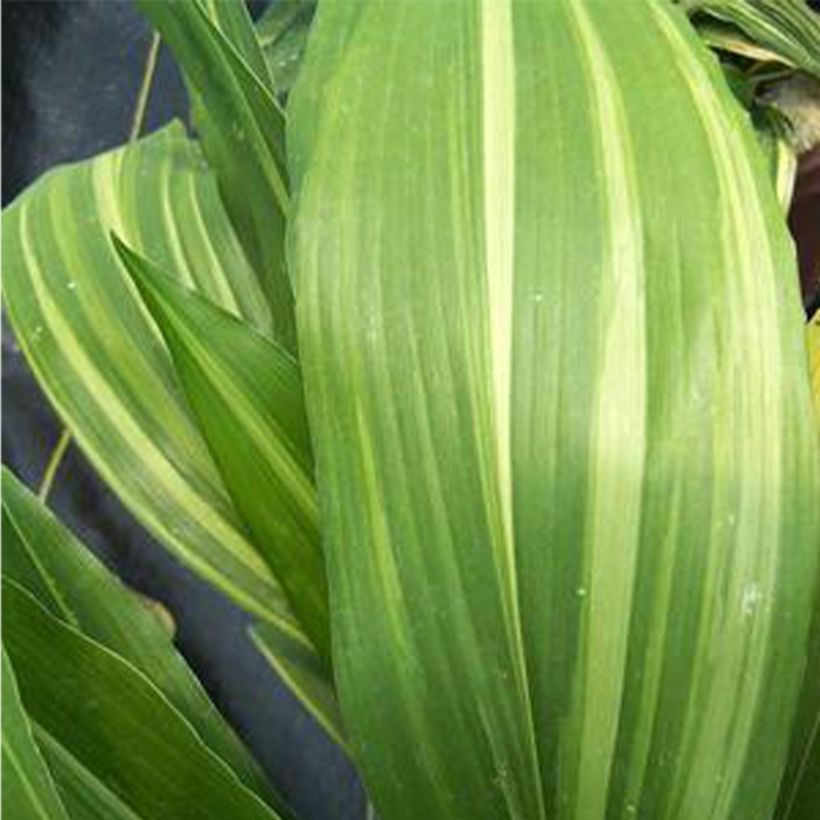

Flowering
Foliage
Plant habit
Botanical data
Aspidistra
elatior
Zebra
Convallariaceae
Cast-Iron Plant, Bar Room Plant
Aspidistra elatior 'Akebono'
East Asia
Planting and care
Plant Aspidistra eliator Zebra in spring or autumn, in a well-drained, light, not too chalky soil (ideally slightly acidic like acid compost), in shade, without direct sunlight. Its roots suffer from stagnant moisture in winter, so it will be necessary to ensure good drainage in heavy and clayey soil. When planted under large trees, it benefits from natural drainage due to their roots absorbing water. This perennial also appreciates the layer of compost that naturally forms at the base of deciduous trees if the leaves are left to decompose naturally. In early spring, remove damaged leaves before annual regrowth. This plant requires no special maintenance and can go without watering once established. The foliage disappears below -5 °C (23 °F), but the plant regrows from the stump in spring after short freezes of around -12 to -15 °C (10.4 to 5 °F). This species of Aspidistra is the hardiest of all.
Its enemies are gastropods (slugs, snails) in spring: make sure to protect it, especially in the first years. Excess moisture can lead to the development of fungi that cause brown spots on the leaves. To help it establish itself, carefully weed around the young plants in the first years.
Cultivation in pots: in good horticultural compost, with a drainage layer at the bottom of the pot to help water flow. This Aspidistra can also be grown indoors, in a bright room, but without direct sunlight that can scorch the foliage. Water regularly, but not excessively, allowing the surface of the compost to dry between waterings. Occasionally apply a universal fertiliser, every 15 days during the growth period, but not in winter. The roots should not stagnate in the water in the saucer placed under the pot.
The leaves gather dust and can be washed or wiped but only with clear water: bear in mind that dust does not harm the plants; it only affects their aesthetic appeal.
Repotting every 2-3 years in spring is sufficient. Take this opportunity to divide your Aspidistra, taking pieces of rootstock with at least 2 leaves. The young plants should only receive fertiliser after a few months of growth, in the following spring, when vegetation resumes.
Planting period
Intended location
Care
Planting & care advice
-
, onOrder confirmed
Reply from on Promesse de fleurs
Similar products
Haven't found what you were looking for?
Hardiness is the lowest winter temperature a plant can endure without suffering serious damage or even dying. However, hardiness is affected by location (a sheltered area, such as a patio), protection (winter cover) and soil type (hardiness is improved by well-drained soil).

Photo Sharing Terms & Conditions
In order to encourage gardeners to interact and share their experiences, Promesse de fleurs offers various media enabling content to be uploaded onto its Site - in particular via the ‘Photo sharing’ module.
The User agrees to refrain from:
- Posting any content that is illegal, prejudicial, insulting, racist, inciteful to hatred, revisionist, contrary to public decency, that infringes on privacy or on the privacy rights of third parties, in particular the publicity rights of persons and goods, intellectual property rights, or the right to privacy.
- Submitting content on behalf of a third party;
- Impersonate the identity of a third party and/or publish any personal information about a third party;
In general, the User undertakes to refrain from any unethical behaviour.
All Content (in particular text, comments, files, images, photos, videos, creative works, etc.), which may be subject to property or intellectual property rights, image or other private rights, shall remain the property of the User, subject to the limited rights granted by the terms of the licence granted by Promesse de fleurs as stated below. Users are at liberty to publish or not to publish such Content on the Site, notably via the ‘Photo Sharing’ facility, and accept that this Content shall be made public and freely accessible, notably on the Internet.
Users further acknowledge, undertake to have ,and guarantee that they hold all necessary rights and permissions to publish such material on the Site, in particular with regard to the legislation in force pertaining to any privacy, property, intellectual property, image, or contractual rights, or rights of any other nature. By publishing such Content on the Site, Users acknowledge accepting full liability as publishers of the Content within the meaning of the law, and grant Promesse de fleurs, free of charge, an inclusive, worldwide licence for the said Content for the entire duration of its publication, including all reproduction, representation, up/downloading, displaying, performing, transmission, and storage rights.
Users also grant permission for their name to be linked to the Content and accept that this link may not always be made available.
By engaging in posting material, Users consent to their Content becoming automatically accessible on the Internet, in particular on other sites and/or blogs and/or web pages of the Promesse de fleurs site, including in particular social pages and the Promesse de fleurs catalogue.
Users may secure the removal of entrusted content free of charge by issuing a simple request via our contact form.
The flowering period indicated on our website applies to countries and regions located in USDA zone 8 (France, the United Kingdom, Ireland, the Netherlands, etc.)
It will vary according to where you live:
- In zones 9 to 10 (Italy, Spain, Greece, etc.), flowering will occur about 2 to 4 weeks earlier.
- In zones 6 to 7 (Germany, Poland, Slovenia, and lower mountainous regions), flowering will be delayed by 2 to 3 weeks.
- In zone 5 (Central Europe, Scandinavia), blooming will be delayed by 3 to 5 weeks.
In temperate climates, pruning of spring-flowering shrubs (forsythia, spireas, etc.) should be done just after flowering.
Pruning of summer-flowering shrubs (Indian Lilac, Perovskia, etc.) can be done in winter or spring.
In cold regions as well as with frost-sensitive plants, avoid pruning too early when severe frosts may still occur.
The planting period indicated on our website applies to countries and regions located in USDA zone 8 (France, United Kingdom, Ireland, Netherlands).
It will vary according to where you live:
- In Mediterranean zones (Marseille, Madrid, Milan, etc.), autumn and winter are the best planting periods.
- In continental zones (Strasbourg, Munich, Vienna, etc.), delay planting by 2 to 3 weeks in spring and bring it forward by 2 to 4 weeks in autumn.
- In mountainous regions (the Alps, Pyrenees, Carpathians, etc.), it is best to plant in late spring (May-June) or late summer (August-September).
The harvesting period indicated on our website applies to countries and regions in USDA zone 8 (France, England, Ireland, the Netherlands).
In colder areas (Scandinavia, Poland, Austria...) fruit and vegetable harvests are likely to be delayed by 3-4 weeks.
In warmer areas (Italy, Spain, Greece, etc.), harvesting will probably take place earlier, depending on weather conditions.
The sowing periods indicated on our website apply to countries and regions within USDA Zone 8 (France, UK, Ireland, Netherlands).
In colder areas (Scandinavia, Poland, Austria...), delay any outdoor sowing by 3-4 weeks, or sow under glass.
In warmer climes (Italy, Spain, Greece, etc.), bring outdoor sowing forward by a few weeks.






























